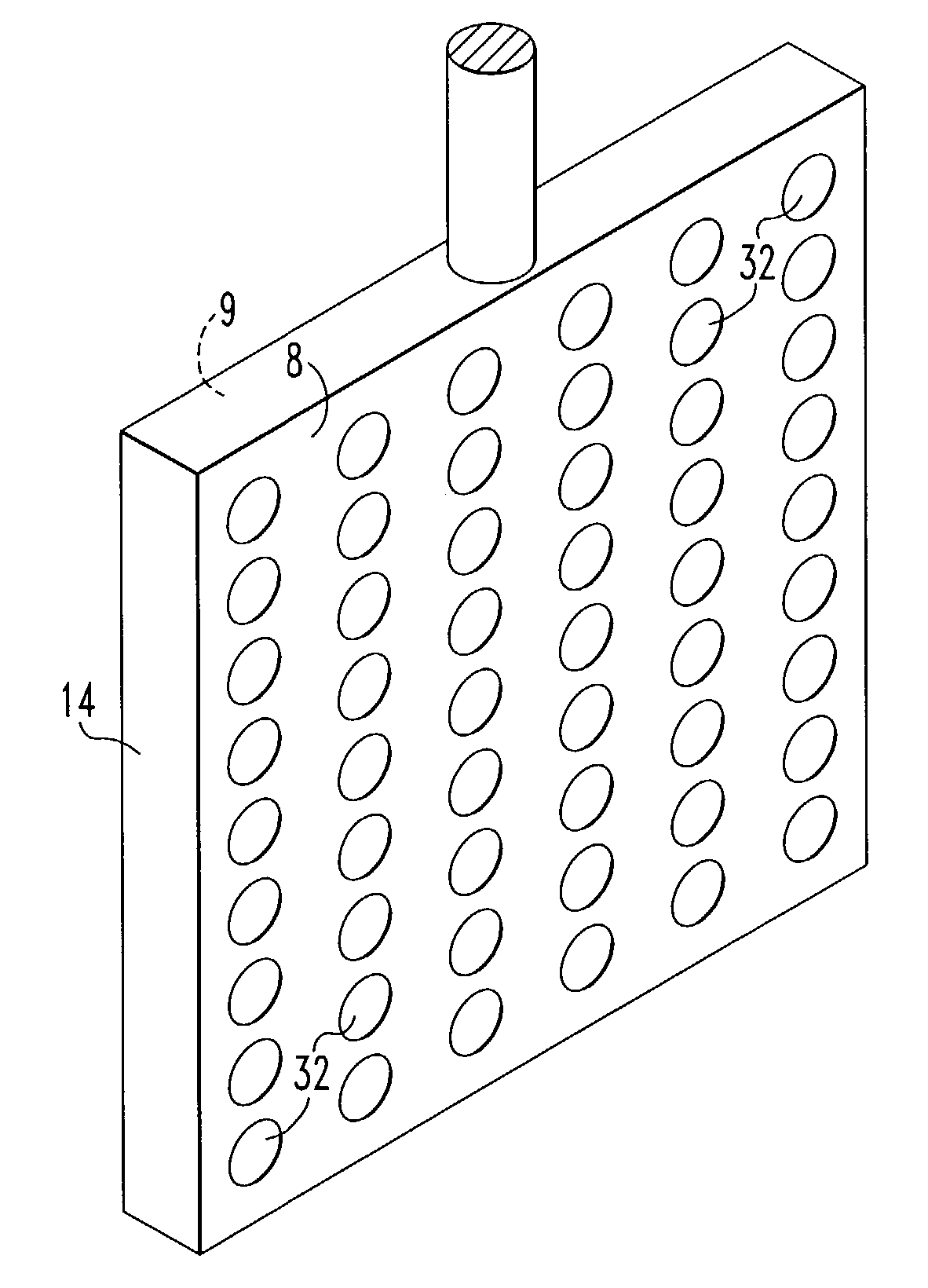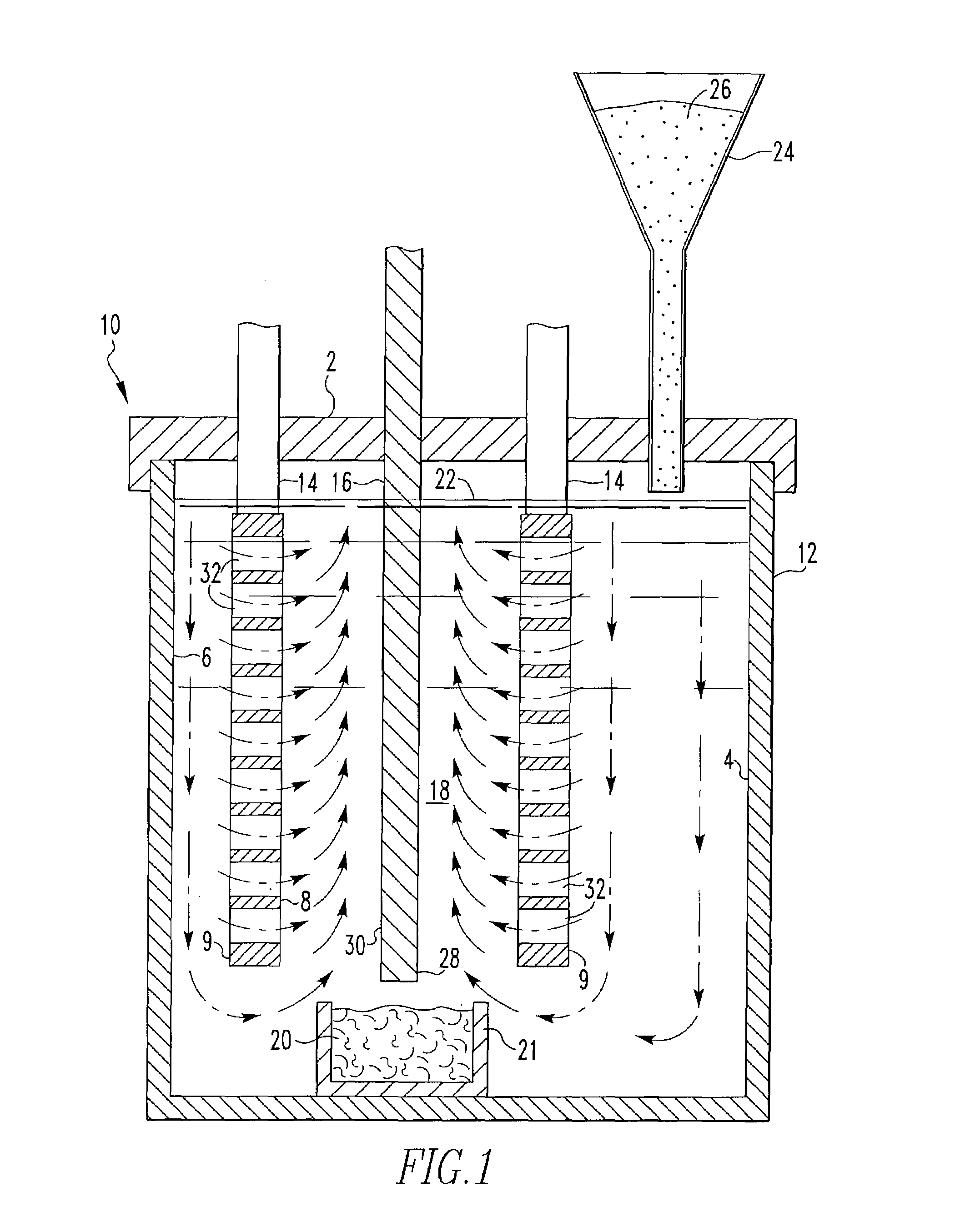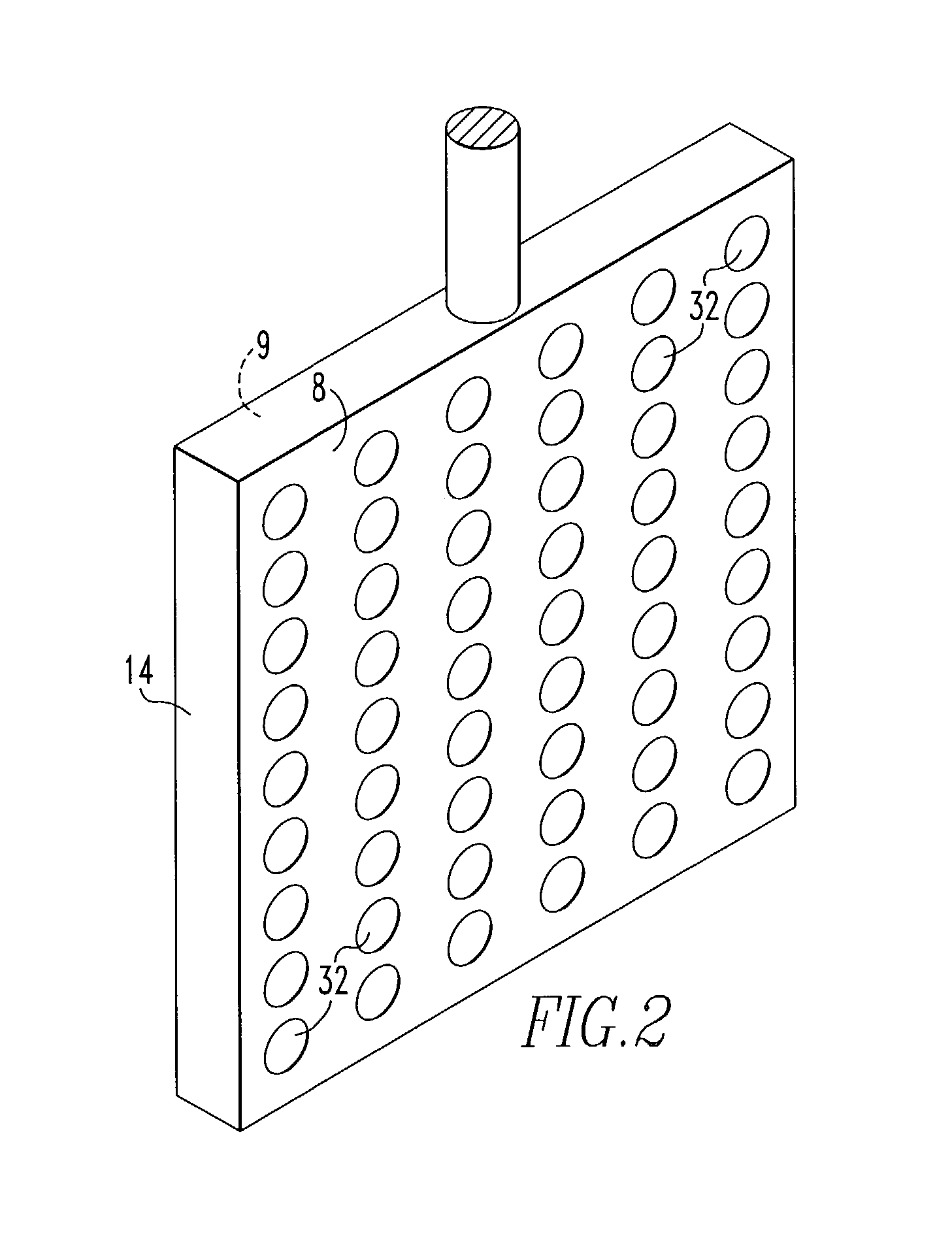Cu-Ni-Fe anode for use in aluminum producing electrolytic cell
anode and aluminum technology, applied in the field of aluminum, can solve the problem of unfavorable metal distribution of complex workpieces
- Summary
- Abstract
- Description
- Claims
- Application Information
AI Technical Summary
Benefits of technology
Problems solved by technology
Method used
Image
Examples
example 1
[0062]This invention was tested in a 200A cell having the configuration shown in FIG. 1 with alumina added to the cell substantially continuously. The cell comprised an alumina ceramic container. Within the ceramic container was placed a vertical cathode suspended through the lid of the container and connected to a bus bar. On either side of the cathode, two anodes were positioned or suspended through the lid and connected to bus bar. The anodes were 4 inches by 4 inches by 0.25 inch thick. Each anode was drilled to provide 112 holes 0.25 inch in diameter. The anodes were comprised of 42 wt. % Cu, 30 wt. % Ni and 28 wt. % Fe, and the cathode was TiB2. The cell contained a molten salt bath comprised of 38.89 wt. % sodium fluoride and 61.11 wt. % aluminum fluoride. The top of the cell was sealed with an insulating lid and the cell was maintained at an operating temperature of 770°–780° C. which was above the melting point of the salt bath and the aluminum metal. The alumina fed to the...
PUM
| Property | Measurement | Unit |
|---|---|---|
| temperature | aaaaa | aaaaa |
| temperature | aaaaa | aaaaa |
| melting point | aaaaa | aaaaa |
Abstract
Description
Claims
Application Information
 Login to View More
Login to View More - R&D
- Intellectual Property
- Life Sciences
- Materials
- Tech Scout
- Unparalleled Data Quality
- Higher Quality Content
- 60% Fewer Hallucinations
Browse by: Latest US Patents, China's latest patents, Technical Efficacy Thesaurus, Application Domain, Technology Topic, Popular Technical Reports.
© 2025 PatSnap. All rights reserved.Legal|Privacy policy|Modern Slavery Act Transparency Statement|Sitemap|About US| Contact US: help@patsnap.com



